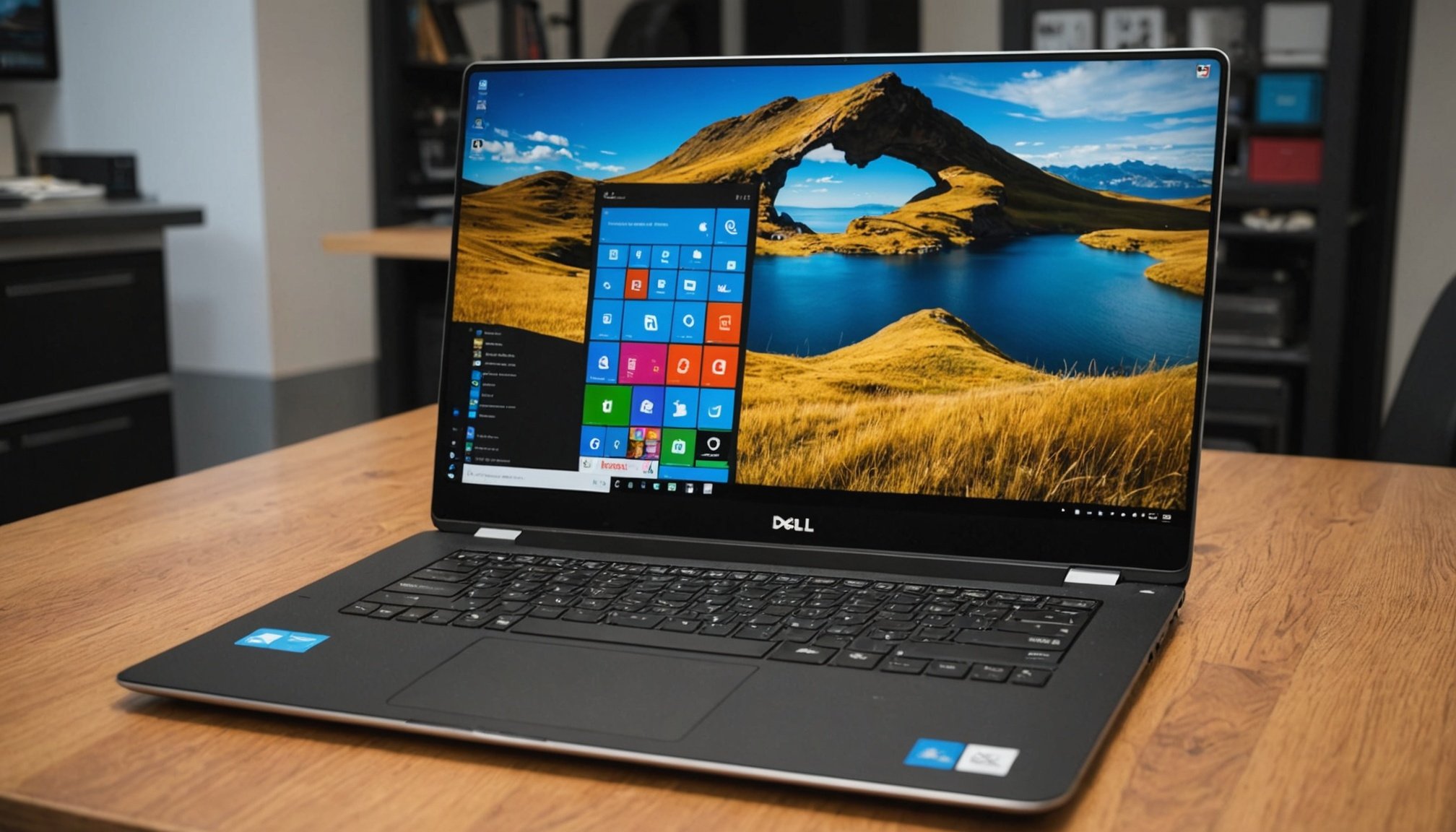Prerequisites for Dual-Boot Installation
Setting up a dual-boot system on your Dell XPS 15 with Windows 10 and Kali Linux requires some thorough preparation. Here’s what you need to ensure a smooth installation process.
First and foremost, verify that your Dell XPS 15 meets the recommended system specifications for both operating systems. Windows 10 generally requires a minimum of 2GB RAM and 20GB of hard disk space, while Kali Linux, known for its rich security tools, needs around 2GB RAM and 20GB of disk space. It’s critical to evaluate whether your device can handle the dual setup without performance degradation.
Have you seen this : Unlocking your home network: the ultimate guide to securing and optimizing with the tp-link deco m9 plus mesh system
Backing up existing data cannot be stressed enough. A dual-boot setup may cause data loss if done incorrectly. Use external drives or cloud services to secure files that are irreplaceable. Simultaneously, assess your disk space to ensure sufficient room is available for both operating systems and additional software.
Finally, prepare installation media separately for Windows 10 and Kali Linux. You’ll need bootable USB drives or DVDs, each containing the installation files for the respective operating systems. Ensuring these media are correctly set up will save time and avoid potential errors during installation.
Also read : Essential Strategies for Creating a Safe and Efficient File Server with Intel NUC and Windows Server 2022
Partitioning the Hard Drive
Partitioning a hard drive is a crucial step in setting up a dual-boot system with Windows 10 and Kali Linux. It essentially involves dividing the storage space into distinct sections to accommodate multiple operating systems.
Overview of Partitioning
Disk partitioning is the process of creating separate sections on a hard drive for different uses. For dual-boot setups, a Windows 10 partition typically remains intact, while a Kali Linux partition is created alongside it, ensuring each operating system functions independently.
Tools for Partitioning
For efficient partitioning, tools like Disk Management in Windows and GParted in Kali Linux are essential. Disk Management allows users to resize and create partitions directly within Windows, while GParted provides a graphical interface for detailed partition manipulation, ideal for Linux environments.
Step-by-Step Partitioning Guide
Understanding the partitioning process is crucial for a successful dual-boot setup. Begin by freeing up space using Windows’ Disk Management. Next, boot into a Kali Linux live session and launch GParted to adjust partitions. Ensure each operating system has its own allocated space: typically, a Windows 10 partition requires NTFS formatting, whereas the Kali Linux partition should be formatted to EXT4. Following these steps enables secure multiple OS installations on a single hard drive, facilitating flexibility and resource efficiency.
Installing Windows 10
Installing Windows 10 on a Dell XPS 15 requires careful attention to the process. First, prepare your computer to boot from the Windows installation media. This is done by accessing the BIOS during startup, usually by pressing the F2 or Delete key. Once there, set the boot order to prioritize external devices like a USB flash drive or DVD containing the installation media.
With the computer ready, insert the installation media and restart your Dell XPS 15. The Windows setup should initiate automatically. During the setup of Windows 10 installation, you will be prompted to select language preferences, accept license terms, and choose between upgrade or custom installation. For a dual-boot setup, choose the custom installation and select or create a partition for Windows 10.
As the installation completes, you’ll need to configure initial settings, including region, keyboard layout, and user account creation. Ensuring system security and efficiency, connect to the internet for updates. This last step of installing crucial updates is vital for maintaining system functionality and security. By following these steps, your Windows 10 installation will be seamless, allowing you to enjoy the benefits of this robust operating system on your Dell XPS 15, whether alone or in a dual-boot environment.
Installing Kali Linux
When embarking on a Kali Linux installation, especially on a Dell XPS 15, it’s essential to approach the process methodically. Begin by booting from the Kali Linux installation media. This often involves selecting the USB or DVD from the boot menu, accessible by pressing a specific key (like F12) during startup. Ensuring your installation media is correctly recognized is crucial, as it lays the foundation for the entire setup process.
Once your system successfully boots from the installation media, you’ll choose the correct installation type. For those opting for a dual-boot setup with Windows, this means selecting the option that enables pairing Kali Linux alongside the existing Windows setup. This step is pivotal, as it dictates how both operating systems will coexist.
A critical part of the installation involves managing partitions. During setup, you’re prompted to decide how to allocate the available space. It’s essential to manage these partitions wisely. This ensures Kali Linux has sufficient resources without encroaching too much into your existing Windows partition. Proper partitioning not only secures both operating systems but also optimizes performance. By keeping these steps in mind, users can achieve a smooth installation experience on their Dell XPS 15.
Configuring the Bootloader
When managing a dual-boot system, setting up the GRUB bootloader properly is crucial. It not only determines which operating system loads first but also ensures reliable system booting.
Understanding GRUB
GRUB (Grand Unified Bootloader) plays a central role in dual-boot management. It presents a menu allowing users to choose between installed operating systems. Its versatility makes it the most popular choice for systems requiring dual- boot management. GRUB’s ability to offer direct kernel booting and compatibility with different file systems makes it indispensable.
Configuring GRUB Options
Customization allows GRUB to boot specific operating systems automatically. Users can define the default OS and adjust settings to display the boot menu for extended durations. Editing the /etc/default/grub file and then running update-grub applies these settings. This practical approach ensures each user’s specific requirements are met efficiently.
Troubleshooting Bootloader Issues
Occasionally, bootloader configuration issues arise. Common problems include the bootloader failing to recognize an operating system or loading incorrect settings. Resolving these often involves restoring the GRUB configuration using a live CD or employing command-line repair processes. Understanding and applying solutions rapidly minimizes downtime, achieving swift resolution of dual-boot challenges. These strategic solutions maintain system stability.
Optimizing Performance After Installation
Once you’ve successfully set up a dual-boot system with Windows 10 and Kali Linux, optimizing performance becomes crucial. Ensuring both operating systems run smoothly can enhance your overall experience and system efficiency.
When it comes to Windows 10, adjusting settings such as disabling unnecessary startup programs can significantly improve boot times. Equally, in Kali Linux, ensure to keep your system updated with the latest patches and minimize background processes that might hog resources.
Performance optimization can be achieved by effectively managing resources between the two systems. Allocate appropriate disk space and manage your system’s memory wisely. It’s important not to overload either operating system with excessive applications that can hamper performance. Consider using tools like Task Manager in Windows and System Monitor in Linux to monitor and control system resource usage.
Engage in regular maintenance to keep your dual-boot environment running smoothly. This includes defragmenting the Windows hard drive regularly and clearing cache and unnecessary files in both operating systems to free up space. Additionally, perform routine security scans to ensure that neither operating system is vulnerable to threats, thus maintaining optimum performance.
Troubleshooting Common Issues
Dual-boot systems, particularly on the Dell XPS 15, can present unique challenges requiring effective troubleshooting. Such issues often arise during installation or later, once the system boots up. Here, we outline common problems and provide solutions to tackle them systematically.
Identifying Common Installation Problems
A frequent plight in dual-boot setups is incorrect partitioning, which can lead to data loss. Ensure that the disk partitions are accurate and back up data before proceeding. Another issue is incompatible boot loaders. Verify that the boot loader supports all operating systems intended for installation. Errors during installation may stem from outdated BIOS. Regular BIOS updates are key to preventing such problems.
Solutions for Boot Issues
Understanding your Dell XPS 15’s Secure Boot setting is essential. If the system fails to start, try disabling Secure Boot. Ensure that the boot sequence prioritises the correct drive. Boot issues can also be caused by corrupted boot records, requiring a repair using Bootrec /FixMbr or similar command-line tools.
Network Configuration Troubles
After installation, encountering network connectivity problems can be frustrating. Drivers for the Dell XPS 15 may need updating. Confirm that your network adapter is enabled via Device Manager. Utilise ipconfig and ping commands to diagnose further connectivity issues. An effective network setup post-installation will ensure seamless functionality.











